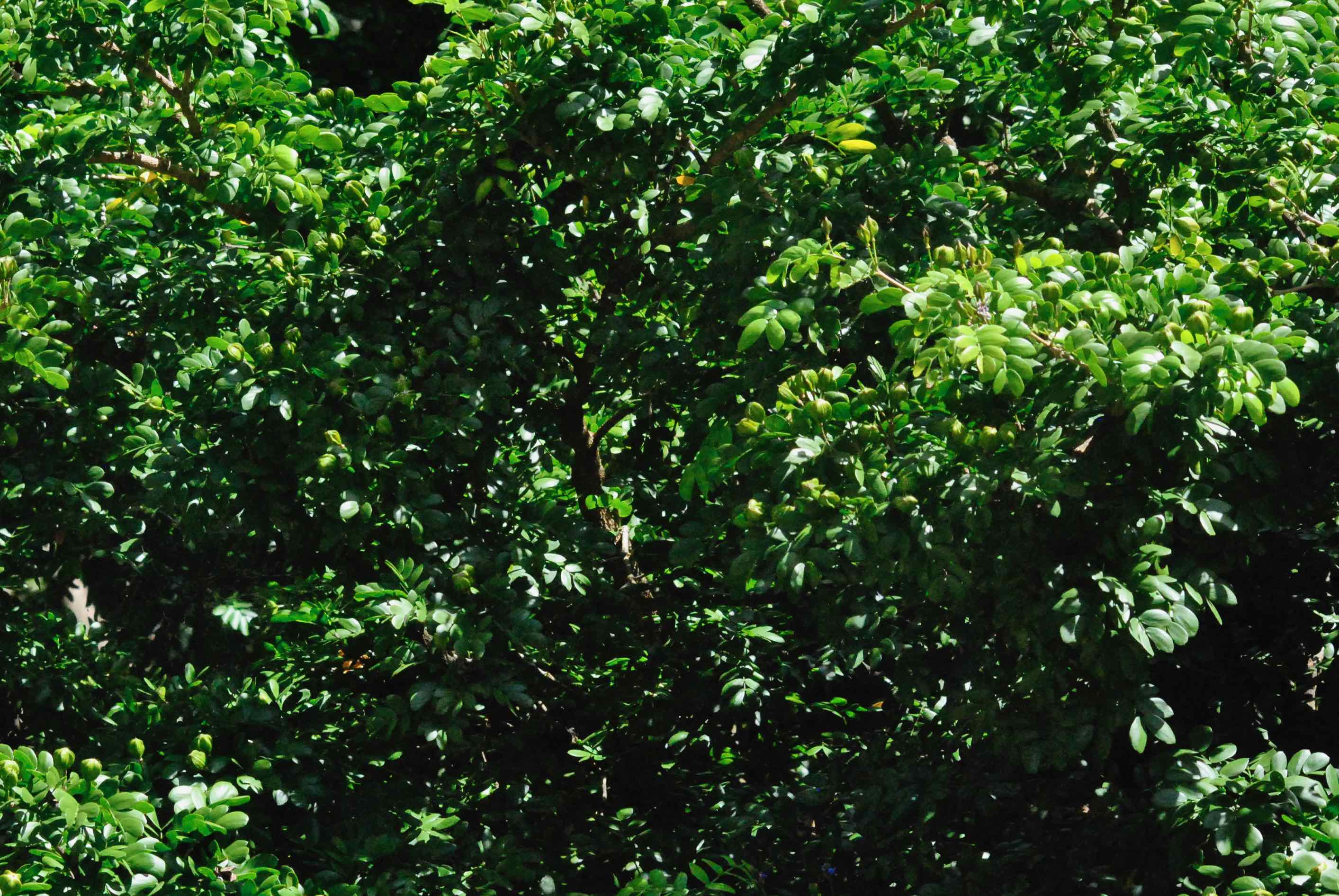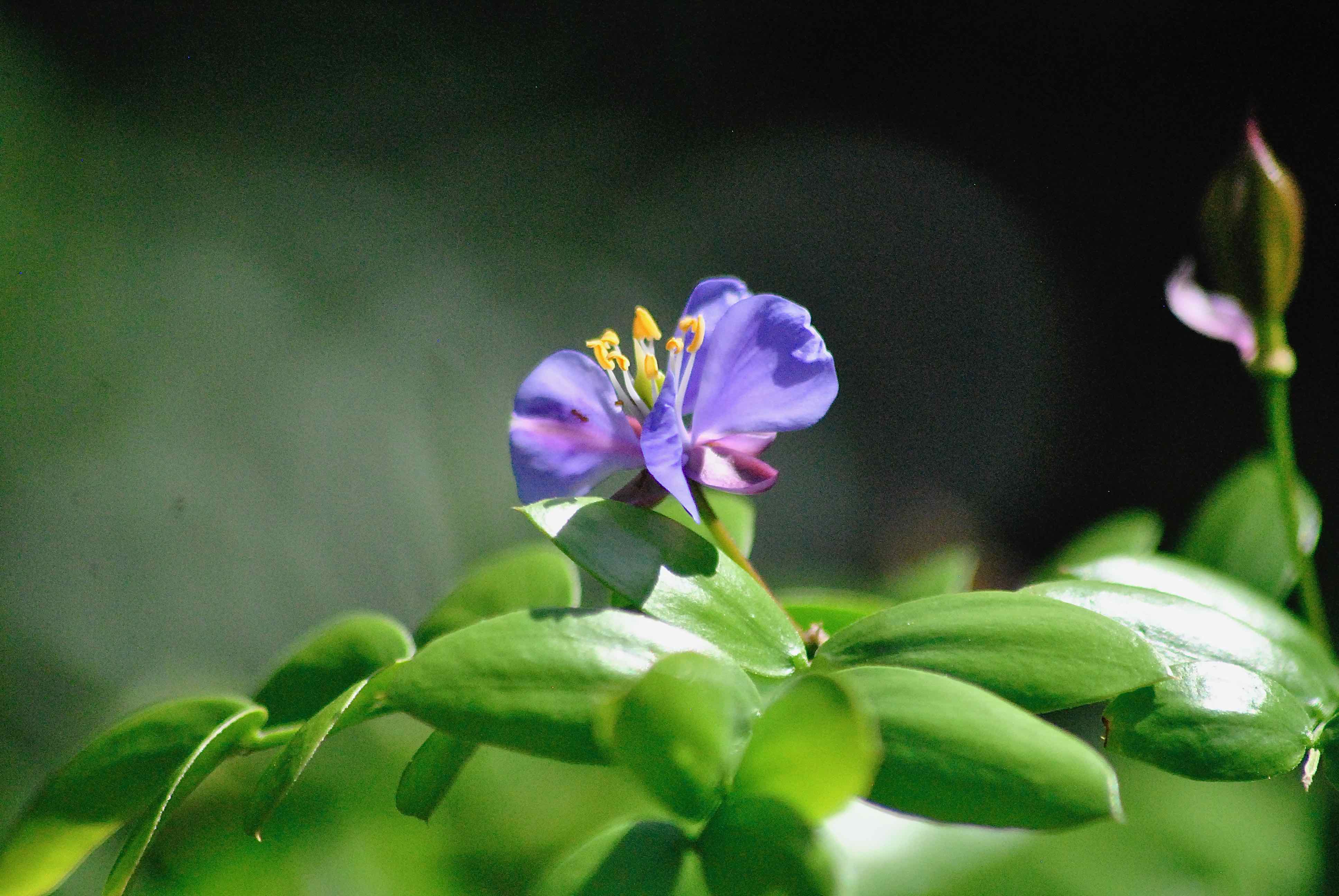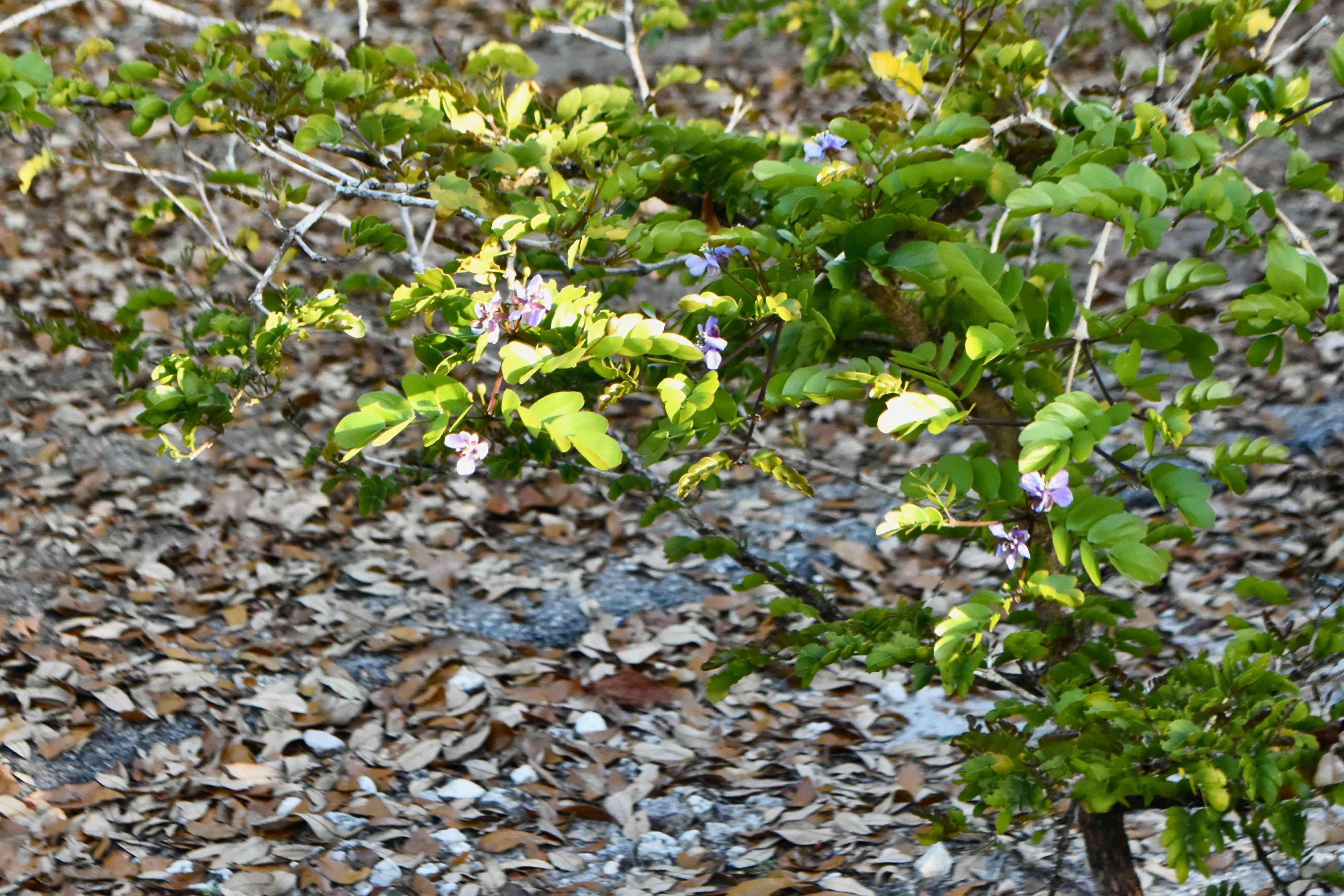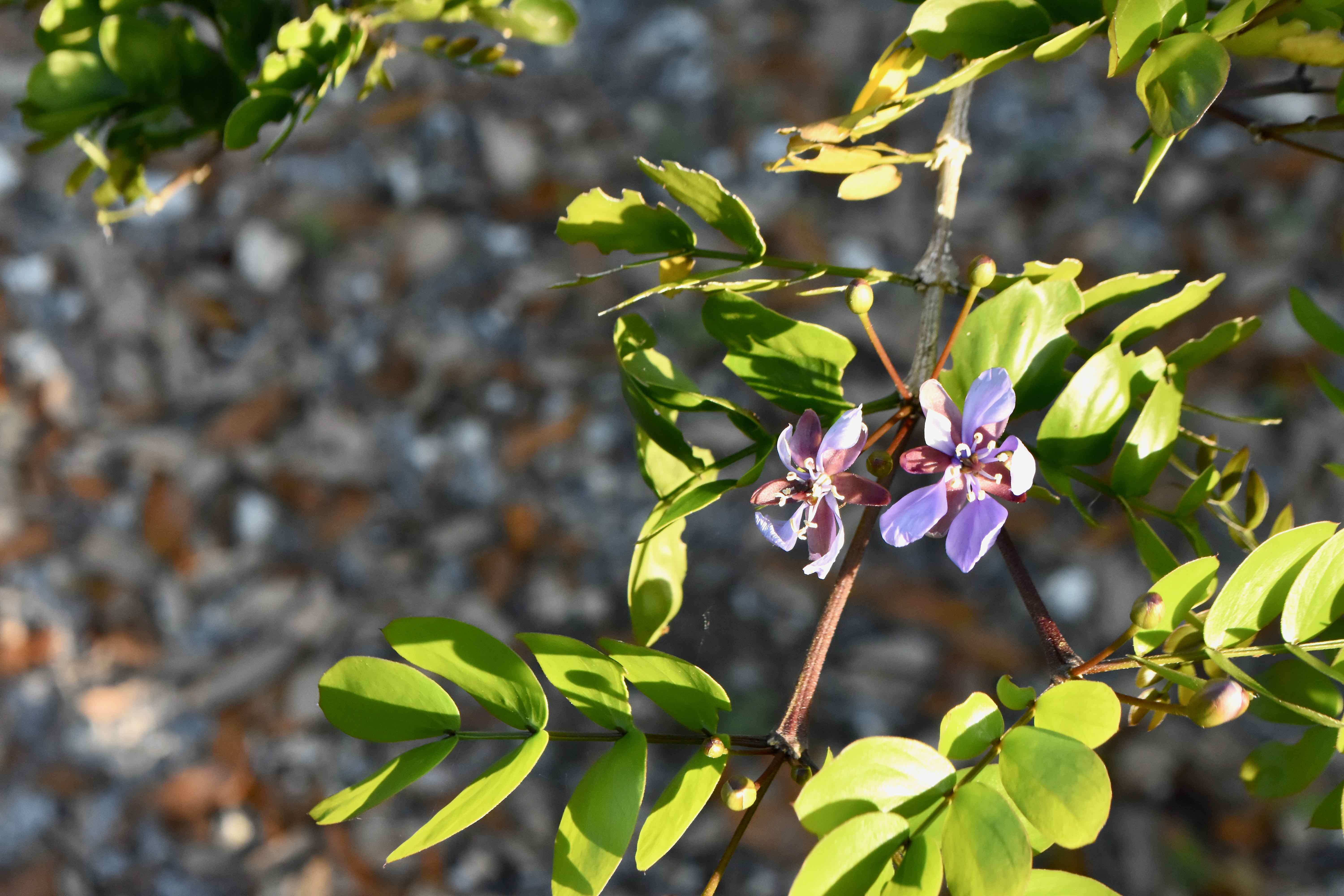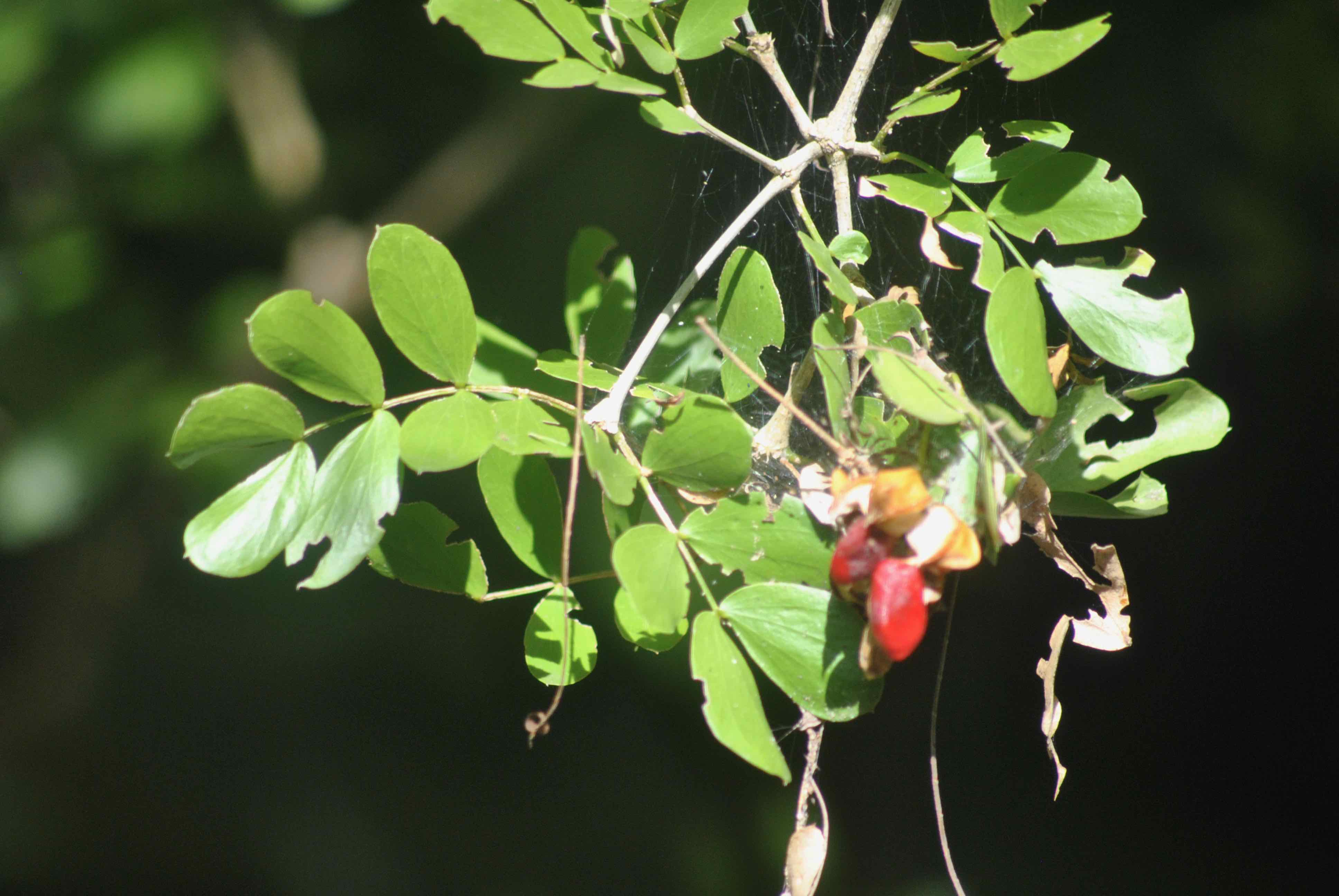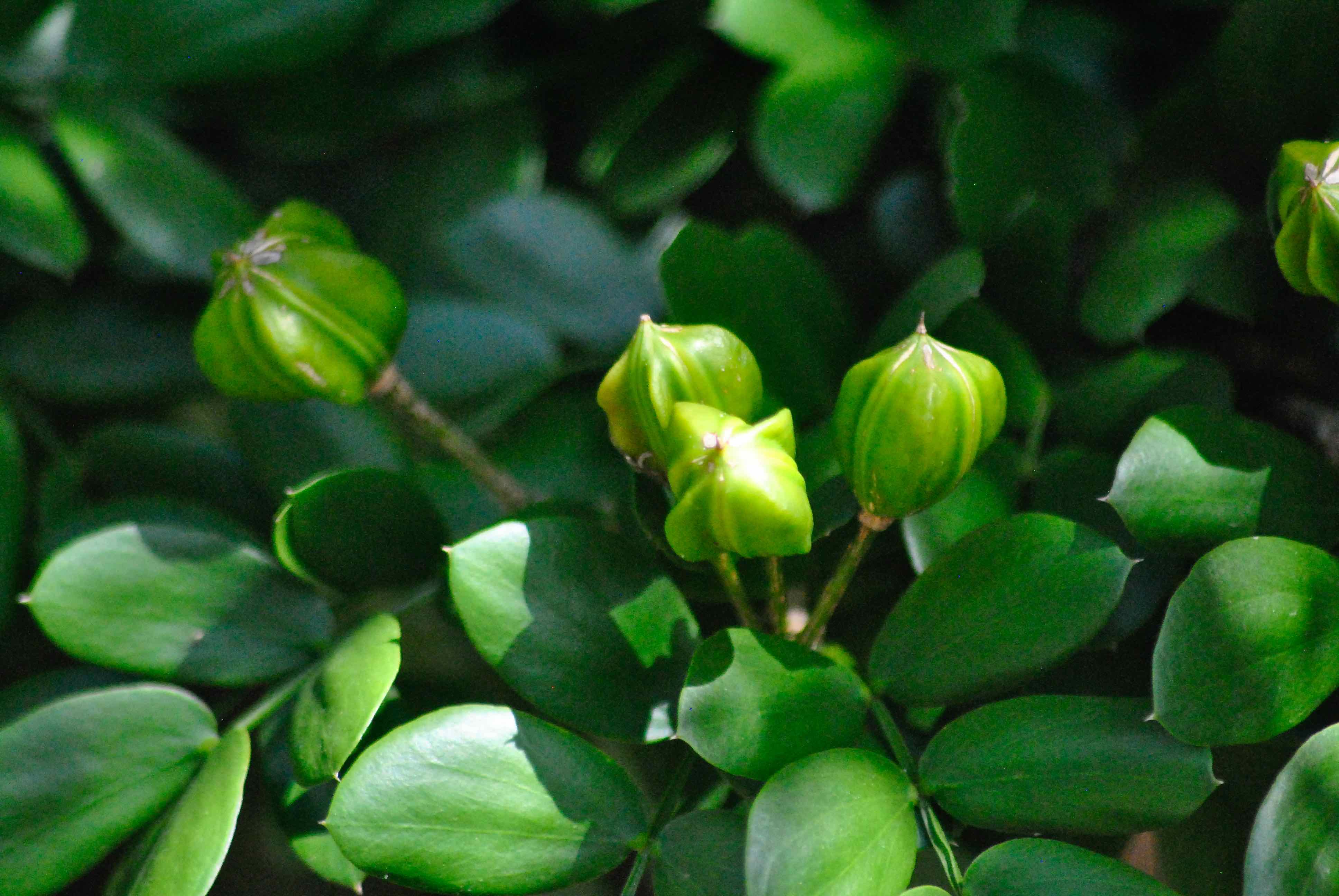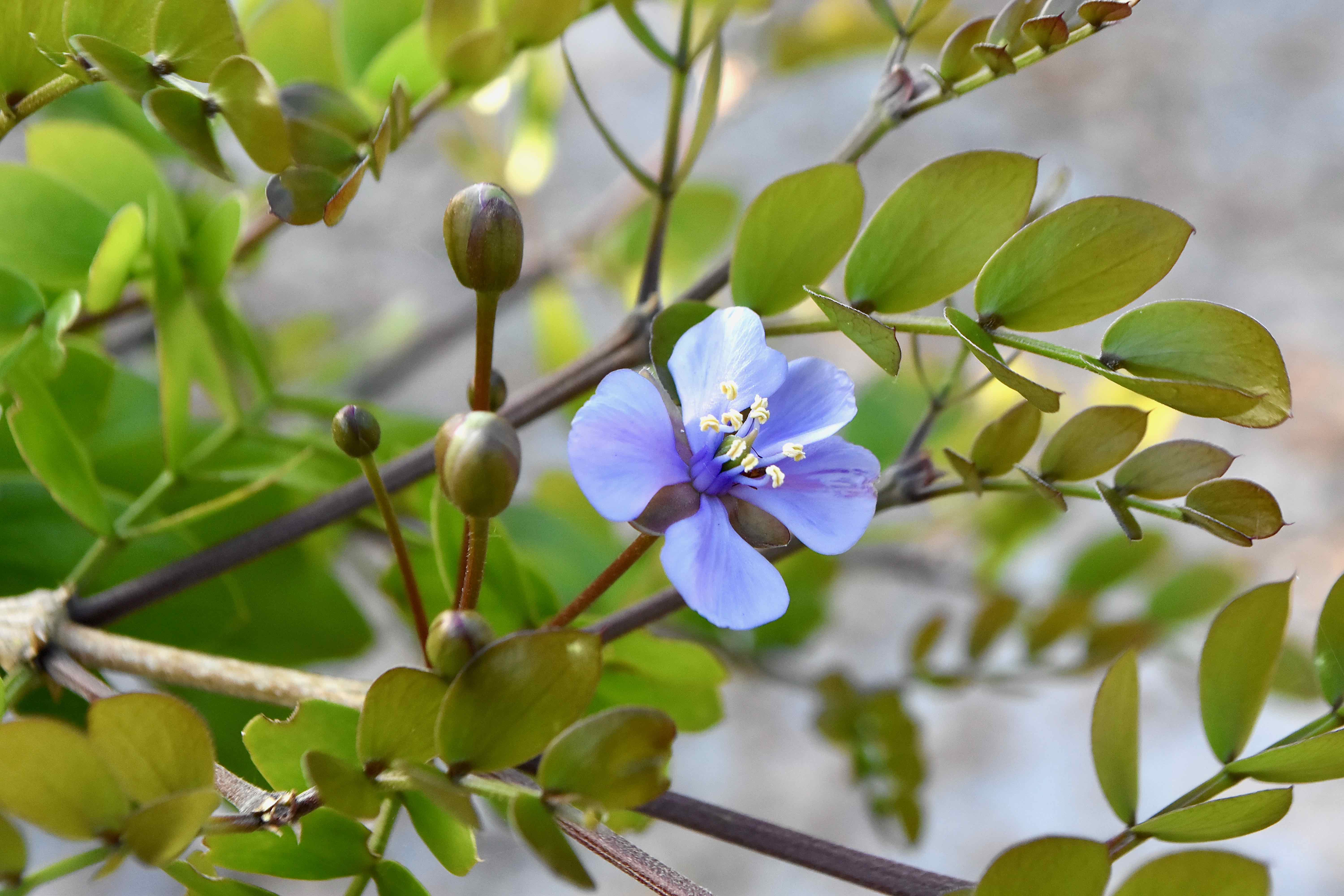
Lignumvitae, photographed at Plantation Preserve Linear Trail, Plantation, Broward County, in February 2018. Others at Tropical Fruit and Spice Park, Redlands, and Crane Point Hammock, Marathon.
There’s not a whole lot not to like about lignumvitae, Guaiacum sanctum. It’s beautiful. It’s strong. And it’s incredibly useful for man and beast alike.
About the only negative is that there isn’t much of it left in the wilds of South Florida or anywhere else for that matter, but that’s on us for overexploiting a good thing. Oh, we should mention that you defintely don’t want to build a boat out of the wood. But in this case, it’s more feature than it is a flaw.
Lignumvitae translates to “tree of life” or “wood of life.” It’s that important to the people within its native range, which includes Florida, the Caribbean, Mexico and Central America.
It’s a small tree that can grow as tall as 30 feet and has a dense, rounded crown, making it perfect as a shade tree. It’s a slow-grower, however, and most specimens are significantly shorter than 30 feet. It is drought-tolerant once established, takes full sun, tolerates salt spray to an extent but not salt water.
Lignumvitae usually has multiple trunks and branches that tend to droop. The bark is off-white to gray, has compound leaves, each with three to five pairs of leaflets; each leaflet is oval to elliptical in shape and one or two inches long. The leaflets often curl upward during the heat of the day. Leaves are arranged alternately along the stem.
The flowers are about an inch in diameter, blue or blueish-purple, each with five petals. Lignumvitae blooms year round, but peaks in the spring, with the flowers giving way to a yellow-orange five-winged capsule. All in all, a beautiful tree, but we’re just starting to get to the good stuff.
Lignumvitae is a host plant for lyside sulphur butterflies, while other butterfly species feast on its nectar, as do bees. Catbirds and mockingbirds eat the seeds, and other birds find refuge within its boughs.
Lignumvitae is the second densest wood in the world and perhaps the hardest. A cubic foot of the stuff will weigh between 25 and 30 pounds, and will sink like a rock. As we noted above, not the stuff you want to build a boat out of. Boat parts, definitely. In fact, lignumvitae was used to make shaft bearings on steamships as early as the 1850s. Back in 1954, it was used to make the propellor shaft bearings for the U.S.S. Nautilus, the world’s first nuclear submarine. It’s that tough. It’s also used to make boat propellers.
Thomas Edison specified its use in shaft bearings for the world’s first hydroelectric generating plant in Appleton, Wisc., back in 1882. It’s still used to make shaft bearings for hydroelectric generators. Unlike metal bearings, it won’t corrode. And it’s durable. Some bearings have been known to last 60 years in service and more. But toughness isn’t all that lignumvitae offers. The wood has natural oils that make shaft bearings self-lubricating. What metal does that?
Want more? Lignumvitae is so dense that in the era before synthetic materials, it was used to make bowling balls. It’s been used to make more prosaic things like mortars and pestles, block planes and other tools.
In the Caribbean, a tea made from lignumvitae leaves was once a standard treatment for syphillis. The leaves also were used to treat tonsillitis, arthritis and skin problems and diseases. The leaves also were used to produce a soap substitute.
From the flowers came medicines to treat asthma, colds, the flu, tuberculosis and other respiratory problems. The inner bark was the source of a liniment to treat sprains and pains. Both leaves and bark were used to make a laxative and a diuretic (increase urine flow). The resin is still used medicinally to find blood in stools through what's called the guaiac smear test.
And all those fine attributes contributed to the near demise of lignumvitae nearly a century ago. One report dated as early as 1921 stated that lignumvitae forests in Cuba were “in danger of total exhaustion” from logging.
In 1914 and 1915, 3,067 tons of lignumvitae logs were exported through Cuba’s major ports, in large measure to feed demand for ships and shipping created by World War I. The U.S. Navy alone once requisitioned 427,000 lignumvitae logs.
Add in the effects of development and deforestation and the result is a tree in trouble. It’s state-listed as endangered in Florida; the International Union for Conservation of Nature rates it as endangered globally.
The good news for lignumvitae is that tree farms fill the demand for commercial uses, so natural populations — those few that still exist — are no longer exploited. Lignumvitae is widely used as a landscaping tree in South Florida and elsewhere, buoying its population
In Florida, there are actually two species of lignumvitae, G sanctum, which is native, and G officinale, which is not. Both are found wild growing only in extreme South Florida: sanctum in Miami-Dade and Monroe counties, particularly the Keys, officinale in Miami-Dade. Best places to see “wild” lignumvitae are Lignumvitae Botanical State Park and other state parks and preserves in the Keys. Tests have shown that some trees in the park might be as old as a 1,000 years, or more. These trees are also under attack from a scale insect that feeds only on lignumvitae trees. Lignumvitae can be found in points north, but almost certainly as a cultivated plant. In the Caribbean, there are five species.
Lignumvitae is the national tree of the Bahamas and the national flower of Jamaica.
Other common names for sanctum include holywood, guayacum and guiacum. Officinale is known as common lignumvitae. Lignumvitae is also spelled lignum vitae and lignum-vitae. Both species are members of Zygophyllaceae, the caltrop family.
Click on photo for larger image
Links for Lignumvitae

